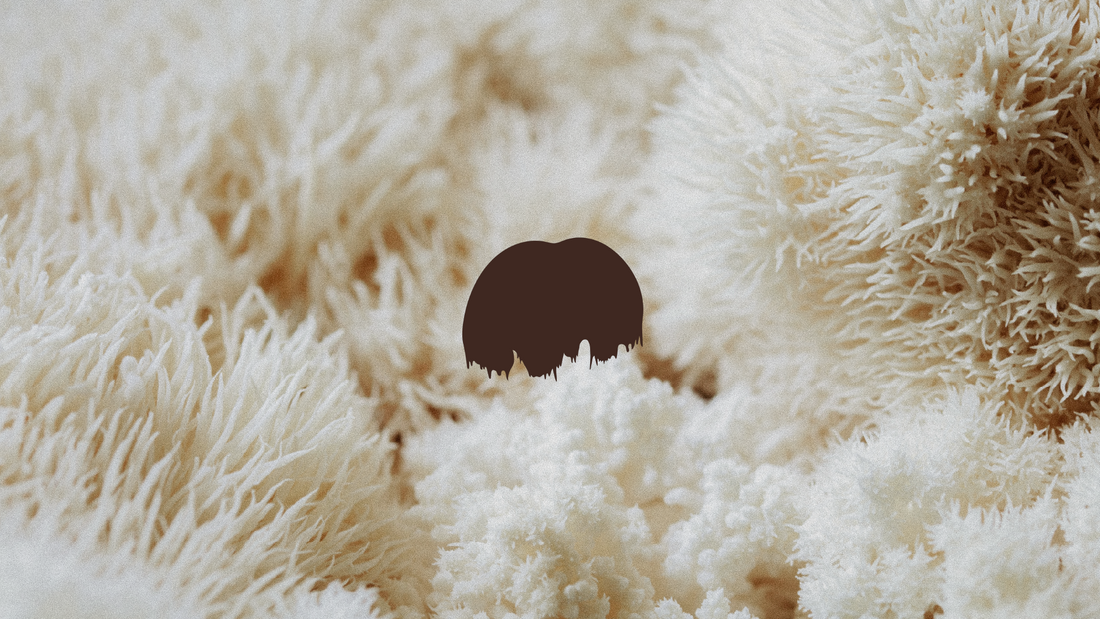
Lion's Mane
Share
Origins and habitat
Hericium erinaceus, commonly known as “ Lion's Mane ”, is a functional mushroom and widely used in cooking. This distinctive mushroom grows mainly on wood and trunks of deciduous trees, such as oak and beech, in temperate environments of Asia, Europe and North America.
It prefers humid and shady habitats, where it plays a crucial ecological role, contributing to the recycling of nutrients.
In Asian culture, Lion's Mane has been known and appreciated for centuries, not only for its culinary use but also for its many medicinal properties .
Properties and applications
Lion's Mane has deep roots in traditional Eastern medicine, where it is considered a natural remedy especially for the health of the nervous system and the digestive system.
- Brain Health and Mental Wellbeing
In the East, this mushroom has always been known for its benefits on cognitive functions , supporting memory , concentration and stimulating curiosity and creativity . It is traditionally associated with a strong and resilient mind , capable of giving "nerves of steel and an extraordinary memory". It is also said that Buddhist monks used it before meditation to improve their concentration.
- Digestion and gastric health
In traditional Chinese medicine, this mushroom has long been used to treat digestive disorders , including gastritis, gastroesophageal reflux, ulcers and difficulty in digestion. Numerous bioactive compounds obtained from Lion's Mane, particularly polysaccharides, have a potential beneficial action on the intestinal microbiota , helping to maintain the well-being of the digestive system. A healthy microbiota has positive effects on the entire organism, in particular on the gut-brain axis .
The main bioactive molecules
Lion's Mane is rich in bioactive compounds that make it unique in the panorama of medicinal mushrooms. Among the most significant, we can distinguish:
-
Erinacins: Erinacins are unique bioactive compounds from Lion's Mane mycelium that stimulate the production of Nerve Growth Factor (NGF), a protein important for the growth and development of nerve cells.
-
Ericenones: Found primarily in the fruiting body of Lion's Mane, Ericenones can also stimulate NGF production and improve cognitive function.
-
Polysaccharides: Mushroom polysaccharides represent their primary active component, contributing to the bioactive action of the mycelium, fruiting body and the entire mushroom.
-
β-glucans : β- glucans are a type of polysaccharide, they are abundant in the cell walls of fungi and their bioactivity has been tested under different conditions.
Curiosity
It all depends on its particular appearance: it is because of its unique and fascinating appearance that Hericium erinaceus is commonly called with numerous nicknames inspired by the animal world. Its soft and filamentous shape in fact resembles a lion's mane, from which the most common name, “Lion's mane” (in English, lion's mane) derives. In China, it is called Shishigashira , which means "lion's head", but also Hou Tou Gu , which can be translated as "monkey cub". More rarely, it is nicknamed Old Man's Beard, due to its long, white hyphae.
Bibliography:
-
Cazzavillan S. Mushrooms for Health. Macro Editions.
-
Cerletti C, et al. Edible Mushrooms and Beta-Glucans: Impact on Human Health. Nutrients. 2021;13(7):2195.
-
Łysakowska P, et al. Medicinal Mushrooms: Their Bioactive Components, Nutritional Value and Application in Functional Food Production-A Review. Molecules. 2023;28(14):5393.
-
Yao L, et al. A systematic review on polysaccharides from fermented Cordyceps sinensis: Advances in the preparation, structural characterization, bioactivities, structure-activity relationships. Int J Biol Macromol. 2024;282(Pt 5):137275.
-
Priori EC, et al. Hericium erinaceus Extract Exerts Beneficial Effects on Gut-Neuroinflammaging-Cognitive Axis in Elderly Mice. Biology (Basel). 2023;13(1):18.

